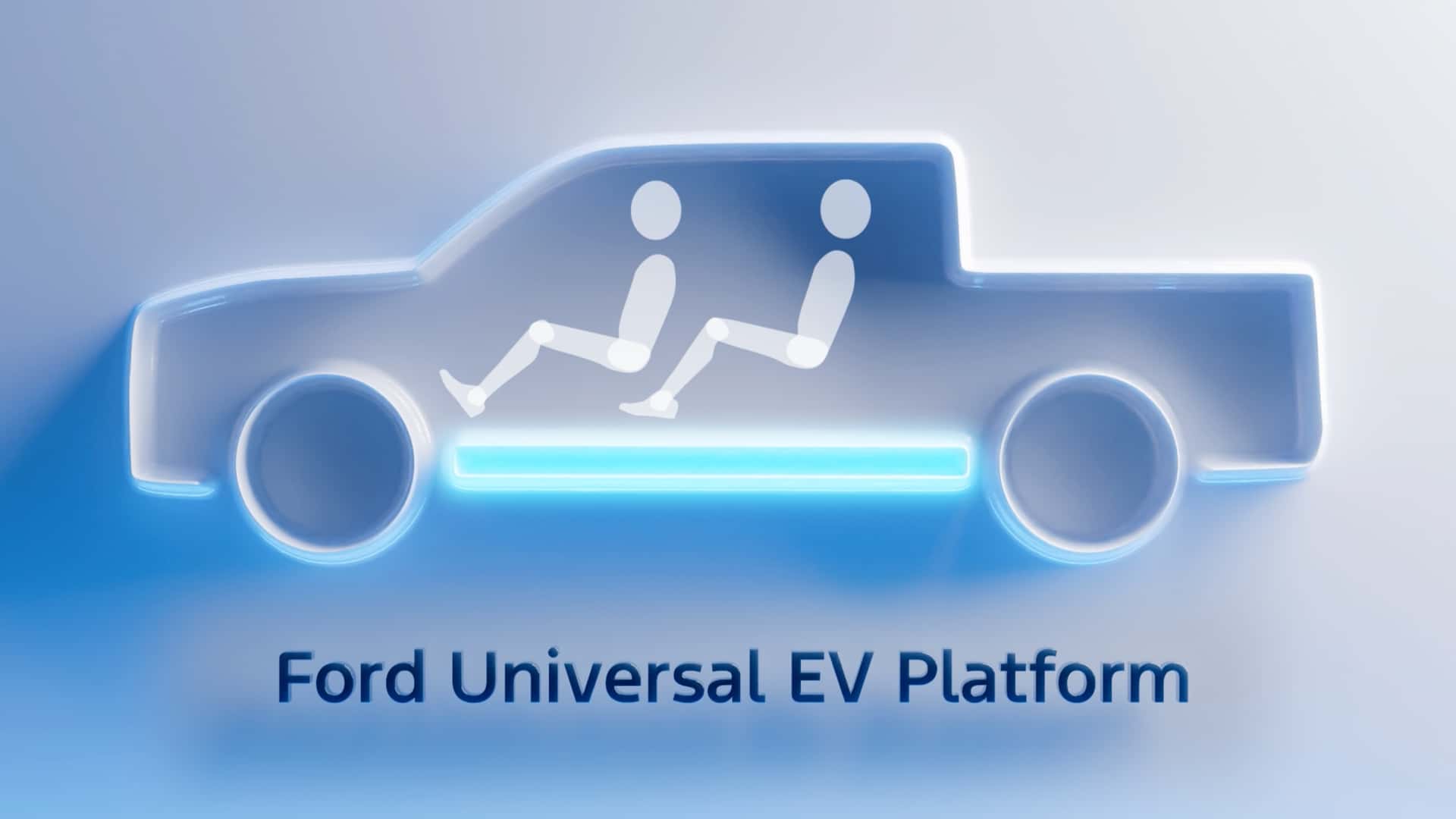
- Ford will launch an affordable electric truck in 2027.
- It will use a completely new electric vehicle platform as well as a radical new manufacturing process aimed at cutting costs and boosting efficiency.
- The automaker claims it will be the first American EV to use U.S.-made lithium-iron phosphate (LFP) batteries.
The cat is finally out of the bag.
Ford says the “Model T moment” of the electric vehicle era is here. That includes a brand-new $30,000 midsize electric pickup truck, which will be part of a family of next-generation EVs riding on what the automaker calls the Ford Universal EV Platform, and manufactured using the Ford Universal EV Production System.
If things go as planned, it could disrupt the U.S. auto industry. America loves trucks, but an affordable electric truck has remained elusive in the U.S. EV market. Instead, automakers have focused on hulking pickups with huge batteries that are expensive and incredibly heavy. Ford is aiming to herald a new era of affordable EVs, starting with a low-cost truck.
Ford will make the midsize electric truck at its Louisville Assembly Plant, which is getting a $2 billion upgrade for the new family of EVs. The automaker says the truck will have more passenger space than the all-new Toyota RAV4, plus a frunk and a bed. It will also accelerate faster than the Mustang EcoBoost, which does the 0-60 miles per hour sprint in around five seconds.
The truck will use a lithium-iron phosphate (LFP) battery in a prismatic cell format. Ford will make the battery locally at its BlueOval Battery Park in Michigan, licensing CATL's LFP tech. More specs, including battery size, driving range, and charging capabilities, will be revealed at a later date. Ford didn’t reveal the name either, but trademark filings first reported by Ford Authority suggest the name could be Ranchero, harking back to the two-door pickup Ford made between the 1950s and 1970s.
“Nobody wants to see another good college try by a Detroit automaker to make an affordable vehicle that ends up with idled plants, layoffs and uncertainty," Ford CEO Jim Farley said in a statement. "We empowered a tiny skunkworks team. We reinvented the moving assembly line. And we are on a path to be the first automaker to make prismatic LFP batteries in the U.S. We will not rely on imports,” Farley added.
The $30,000 electric truck could threaten the bare-bones Slate truck, which will start in the mid-$20,000s but get a blank interior and no features, not even power windows or an infotainment screen. At the cost of the popular Maverick, a compact truck starting at about $30,000, Ford is now promising an electric truck a size and segment above. And it likely won't be bare bones at that price.
The bigger story is what’s underneath the midsize electric truck. Ford seems to have finally embraced the software-first approach. A brand new platform aims to radically cut costs, simplify manufacturing and take a blank slate approach to EVs in the same way that Tesla did more than a decade ago. Ford says its Universal EV Platform will use 20% fewer parts, 25% fewer fasteners, and 40% fewer workstations within the factory.
In a graphic Ford shared with the press, the platform shows its modularity, spawning a pickup truck, a three-row SUV, a cargo van, and a small crossover. Although the other body styles have not been officially confirmed and Ford last year cancelled its three-row electric SUV.
Now it's trying to make EVs in a similar fashion as Tesla and Rivian. It’s introducing a zonal architecture for its new EV platform, cutting 1.3 kilometers, or more than 4,000 feet, of wiring harnesses compared with the Mustang Mach-E. Tesla made similar changes to its wiring harnesses when it launched the Model 3 and Rivian last year said it had cut 1.6 miles of wiring from its second-gen trucks and saved 44 pounds of weight.
“Wiring is the nemesis,” said Kevin Young, Ford’s advanced manufacturing program chief. “If you don’t change that input, then nothing else is ever going to change,” he added.
The ultimate goal for less wiring is to improve packaging, reduce weight, and adopt the simpler but more capable zonal architecture, which relies on fewer yet more powerful ECUs to run vehicle functions. This is something automakers have struggled to do and triggered a software war that pure EV makers like Tesla and Rivian seem to have a good grip on, but an area where legacy automakers like Toyota and Volvo have struggled.
The other big piece of the puzzle is a new manufacturing technique, which Ford calls an “assembly tree.” Traditionally, cars are manufactured on a single assembly line where parts are brought to the car and the vehicle continues to move along the same path until it’s finished. Ford’s assembly tree will break up the vehicle into three different sub-assembly lines that will work in parallel, shrinking the overall time from start to finish and requiring fewer stations.
“Change is necessary,” said Young. “Back’s against the wall, so you have to make it happen.”
Have a tip? Contact the author: suvrat.kothari@insideevs.com







